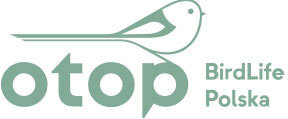The most important natural features of the reserve include the diverse world of birds, as well as sites and communities of rare halophyte plants. The key breeding species is the Aquatic Warbler – a bird that is globally threatened with extinction. In the Karsiborska Kępa, it breeds in the eastern part of the reserve. The Aquatic Warbler builds nests on sedge tussocks, in areas with scarce and low reeds.
Another group of birds that is important in the reserve is waders. These birds build nests on the ground among vegetation that is sufficiently low to allow observation of the surrounding area. They need access to foraging sites, which are shallow backwater and pools. Areas suitable as wader breeding sites are found in the grazed part of the reserve. The wader species include the Dunlin, the Black-tailed Godwit, the Redshank, the Curlew and the Snipe.
The list of breeding birds not only consists of the Aquatic Warbler and waders:
- the meadows and pastures are suitable breeding sites for the Skylark, the Meadow Pipit or the Yellow Wagtail;
- the drainage ditches, embankments and backwaters provide breeding sites for ducks, Shelducks, Greylag Geese, Moorhens and Water Rails;
- Great Crested Grebes and Mute Swans breed on the edges of the island;
- reed beds are the breeding site of Montagu’s and Marsh Harriers, Reed Buntings, Bearded Tits, Sedge Warblers or Reed Warblers.
The island is also a foraging and migration stopover site for species such as the Bean Goose, the Greater White-fronted Goose, the Barnacle Goose, the Grey Heron, the White-tailed Eagle, the Buzzard, Kites, the Crane and several wader species (those mentioned earlier as well as non-breeding ones), corvids and finches.
In addition to these bird highlights, there are interesting plant species on the island. The flora includes halophytes, such as the Sea Arrow-grass, the Sea Aster, the Blackgrass and the Sea Plantain. They often form halophytic plant communities with other species. The most interesting species is the Buck’s-horn Plantain, found nowhere else in Poland.
The semi-natural habitat of the reserve and reed succession oblige OTOP to constantly take measures to preserve the natural values of the area. These measures have been described in the ‘Conservation and Vegetation Management Plan for the Karsiborska Kępa’, which is the underlying document for comprehensive nature protection in the reserve.
The main long-term nature goals of OTOP in the reserve include: maintaining and increasing the population of breeding waders; maintaining and increasing the breeding population of the Aquatic Warbler; and keeping the halophyte vegetation of the island. These goals are reached with active conservation, in particular through the following measures:
- To preserve the breeding sites of the Aquatic Warbler it is necessary to restrain the expansion of dense reed beds. For this purpose, reed is mown on large areas in winter and summer. Winter mowing will damp reeds and facilitate the growth of the less completive sedges in the early spring. This will ensure that the area is attractive for the Aquatic Warbler and allow it to build nests before the growth of reeds. Summer mowing is carried out before reeds suspend their activity and accumulate nutrition material in rootstocks for the next season. Repeating summer mowing for several years will cause reeds to become scarcer and weaker, and consequently create more space and better conditions for sedges. In the future, we plan to restore pasturage on the island, using suitable cattle breeds or the Polish koniks, which will replace mechanical equipment to ensure more nature-friendly management.
- Conservation measures on pastures chiefly include extensive fenced grazing, OTOP signs periodical agreements with the local farmers, who keep up to about fifty cattle and horses. The animals maintain the structure and height of grass that is optimal for waders. With insufficient number of cattle or horses, the suitability of structure of vegetation varies. Patches of vegetation left by livestock are mown mechanically ( mowing of uneaten herbage). In future, OTOP plans to introduce its own herd of a breed that is sturdy and resistant to marshland conditions.
- A measure common to both habitat types is adjustment of water management in the reserve for the purpose of nature protection. The existing water management is old and neglected. OTOP has taken the first steps to adjust the water system for conservation purposes – the necessary measurements and technical plans have been made. At present, OTOP is applying for the required legal permits and financial resources to implement the planned measures. It is worth emphasizing that the new plans include construction of inlets of brackish water from the river. This will greatly benefit the preservation of halophytes and ensure an optimal water level in flooded areas, pools and ditches, which is necessary for birds during the breeding season.
In addition, OTOP is making efforts to include the whole of the Karsiborska Kępa island as an ecological site, protected by law. This has already been included in the plans of the Świnoujście city self-government authorities but it is not known when this form of protection becomes effective.

